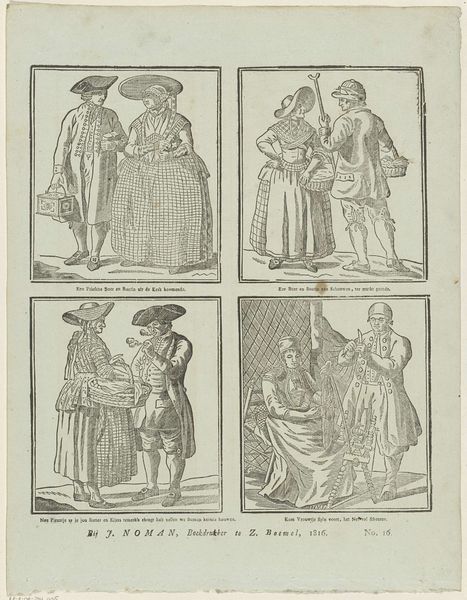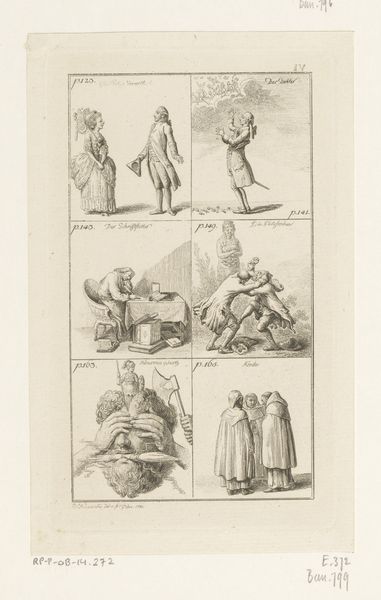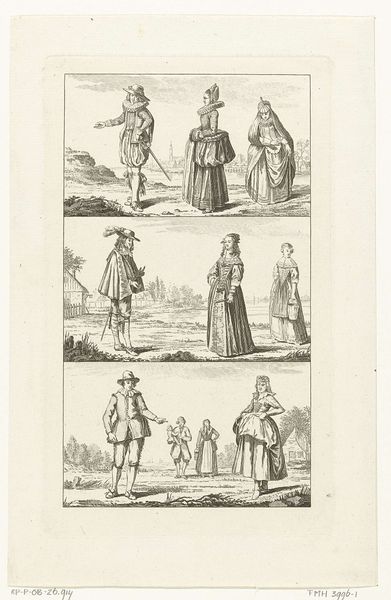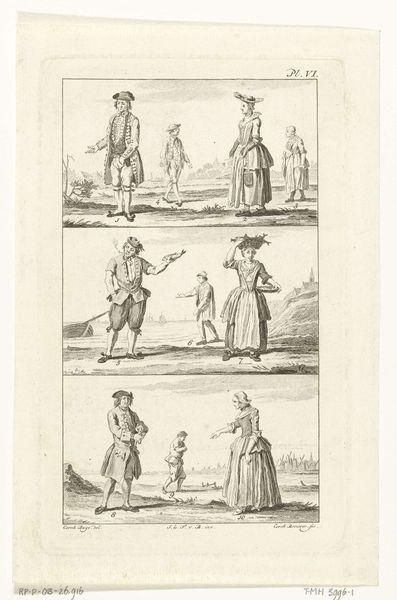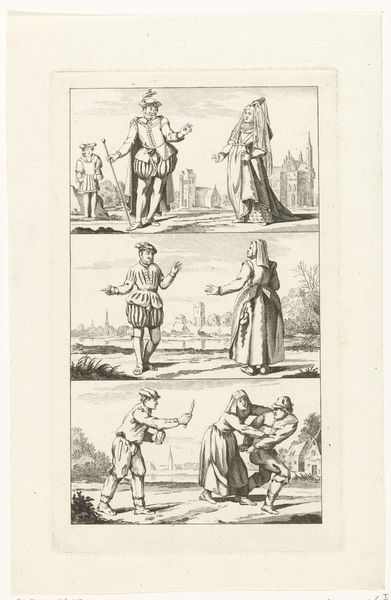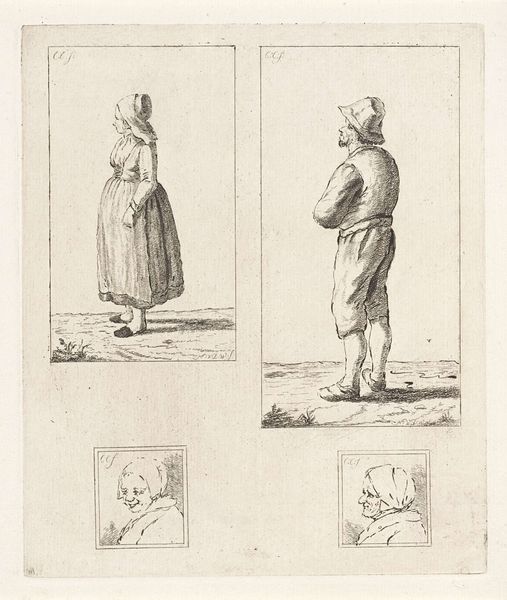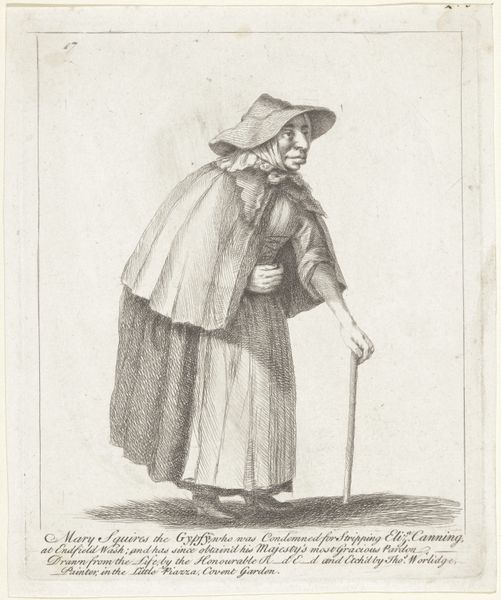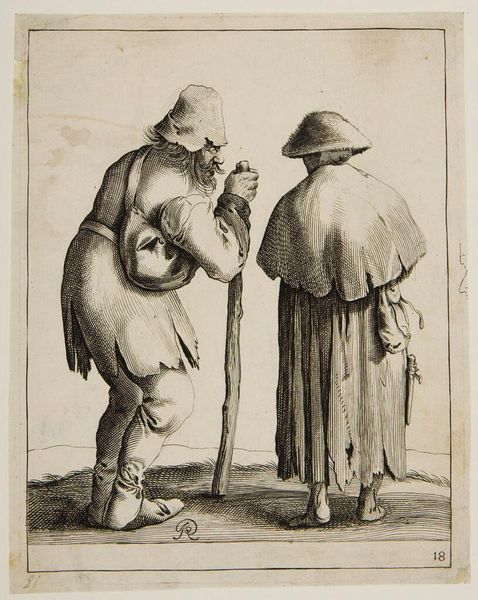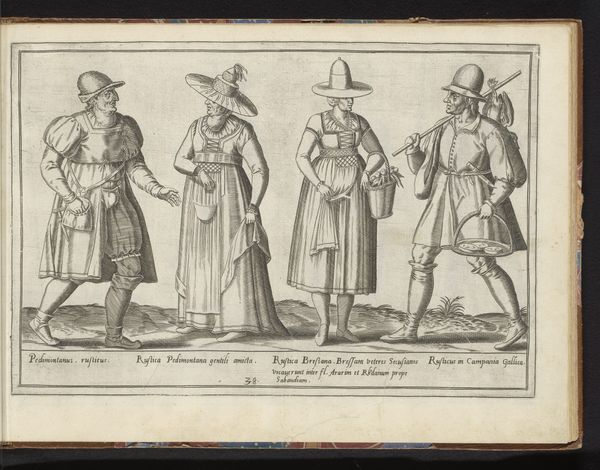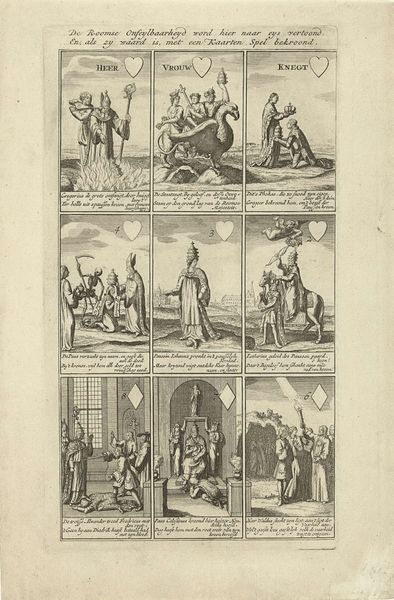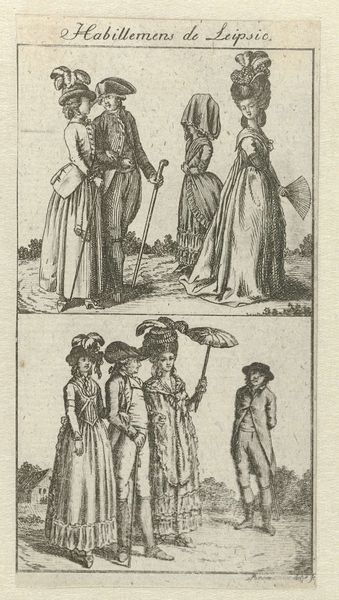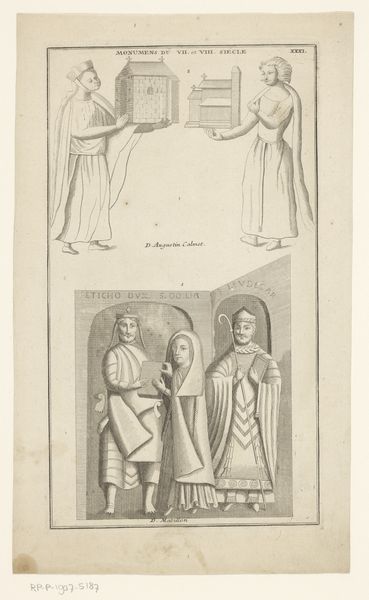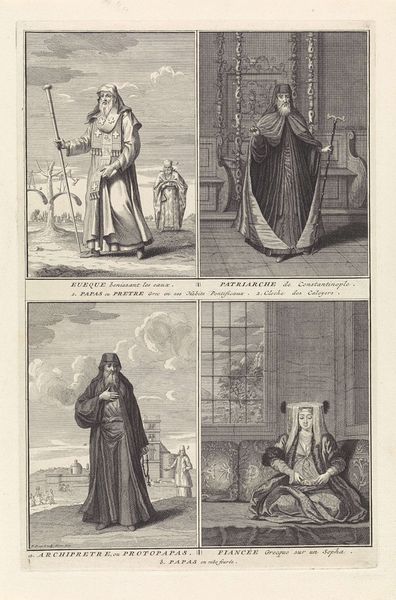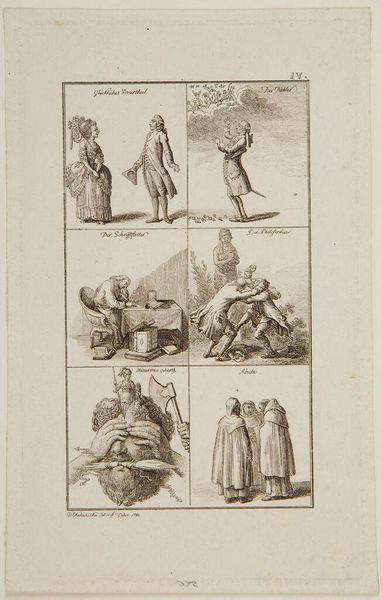
print, engraving
#
portrait
# print
#
orientalism
#
15_18th-century
#
genre-painting
#
engraving
Dimensions: height 326 mm, width 210 mm
Copyright: Rijks Museum: Open Domain
Editor: This engraving from 1728 by Bernard Picart, titled "Chinese Monniken," or "Chinese Monks," is fascinating. It’s composed of four separate depictions, and what strikes me is the almost…clinical way the figures are presented. They feel more like specimens than portraits. How do you interpret this work? Curator: It’s a prime example of Orientalism. Consider the era – the 18th century, during the Enlightenment. Europe was attempting to categorize and understand the world, and that included “the Orient,” often through a lens of European superiority and exoticism. This image, rather than genuinely representing Chinese religious figures, reinforces Western power structures. Editor: So, the way they’re drawn – almost like a catalogue – is deliberate? Curator: Absolutely. Picart is less concerned with accurate portrayal and more with presenting a pre-packaged, easily digestible view of the “other”. Notice the text accompanying the figures. The labels imply judgment and otherness. Are they wearing rosaries like "Catholics," what does that imply? What is suggested by the monk with an odd headdress and musical instrument, described as a "beggar?" It simplifies and exoticizes complex belief systems. Editor: I see what you mean. It’s less about understanding and more about control through representation. So it speaks less to who they are and more to who Europe wants to see them as. Curator: Precisely. The act of observation and documentation becomes an act of power. Images like this had very real consequences. They helped to solidify stereotypes that legitimized colonialism and cultural appropriation. So, when we look at “Chinese Monniken,” we’re also seeing a reflection of European identity being constructed. Editor: That is a far cry from just a historical image, there's a political subtext here that is powerful and a warning sign against simplistic "understanding" and stereotyping today.
Comments
No comments
Be the first to comment and join the conversation on the ultimate creative platform.
